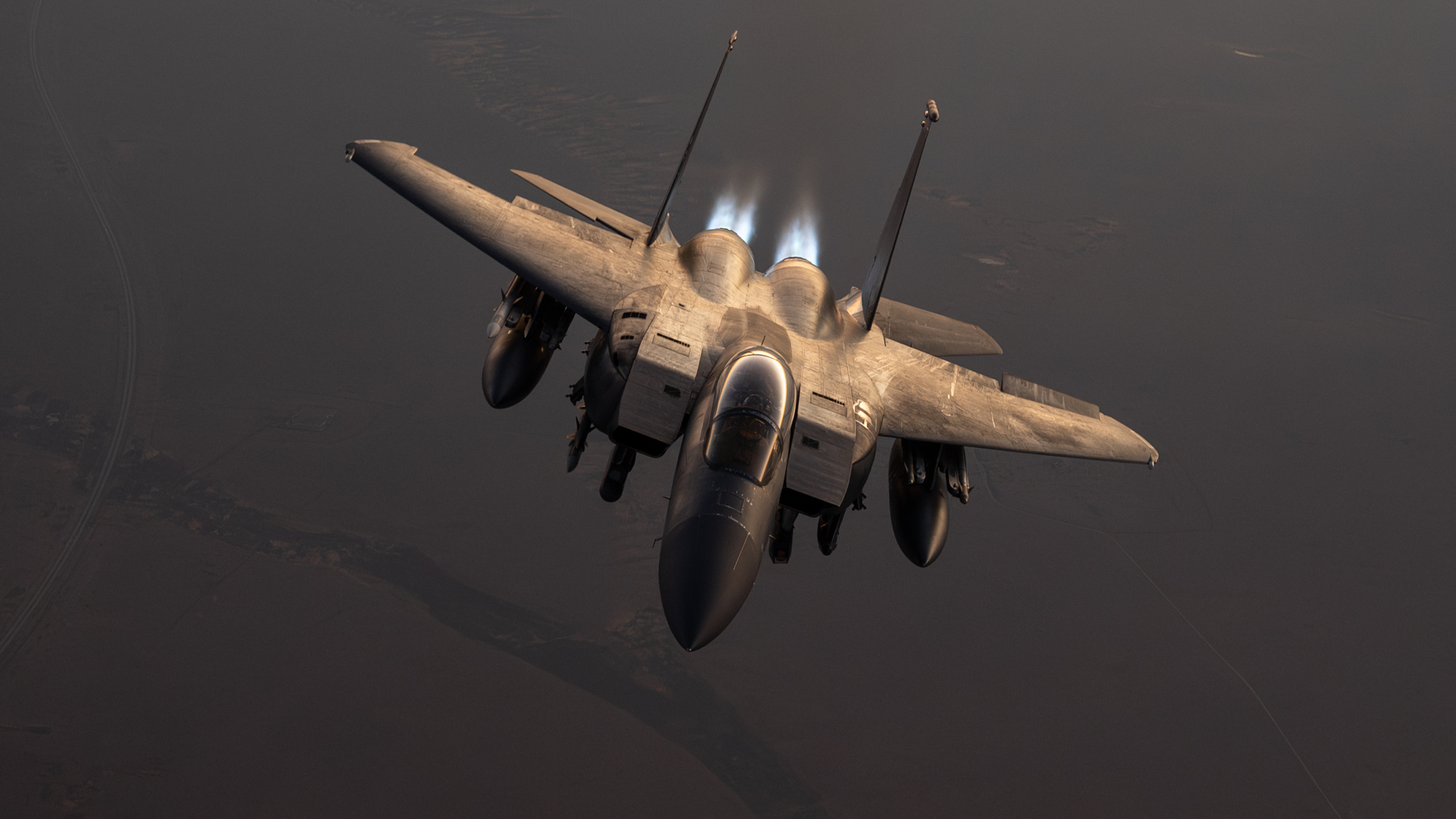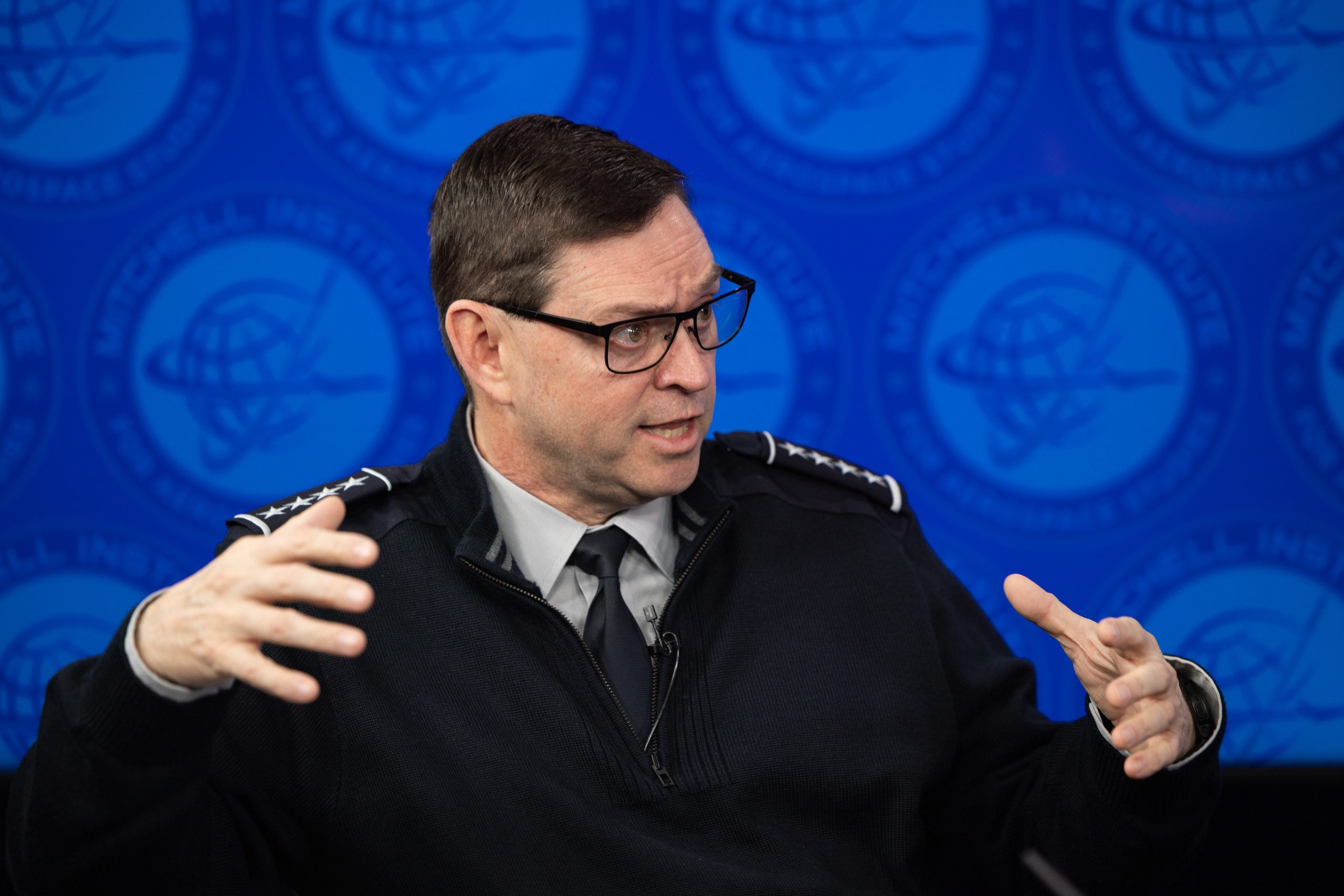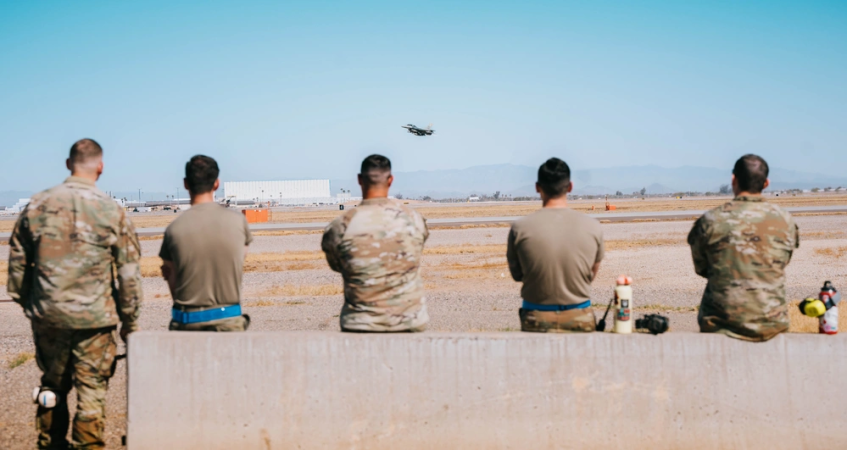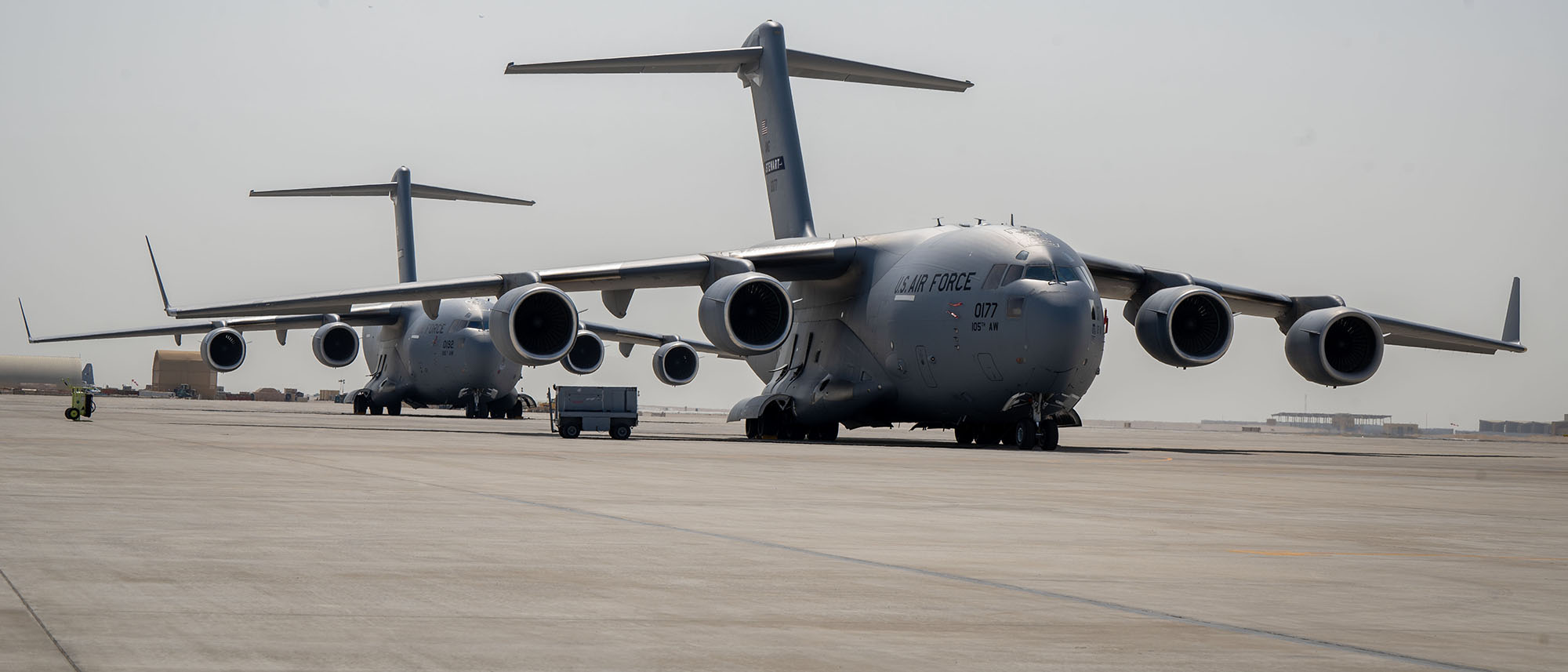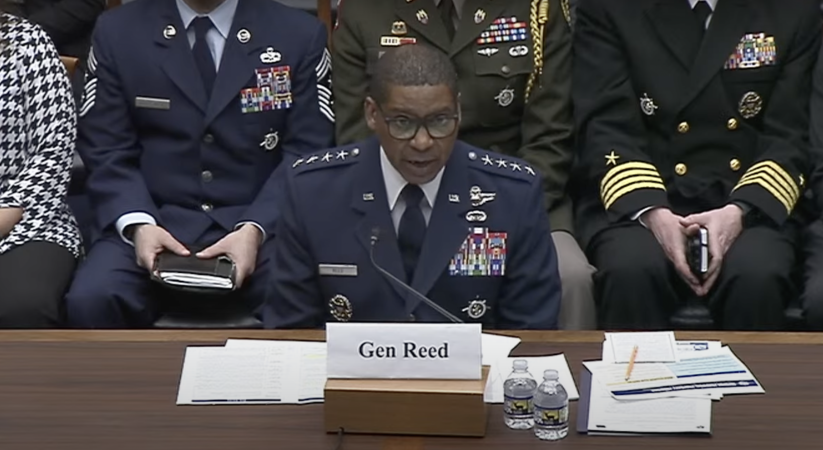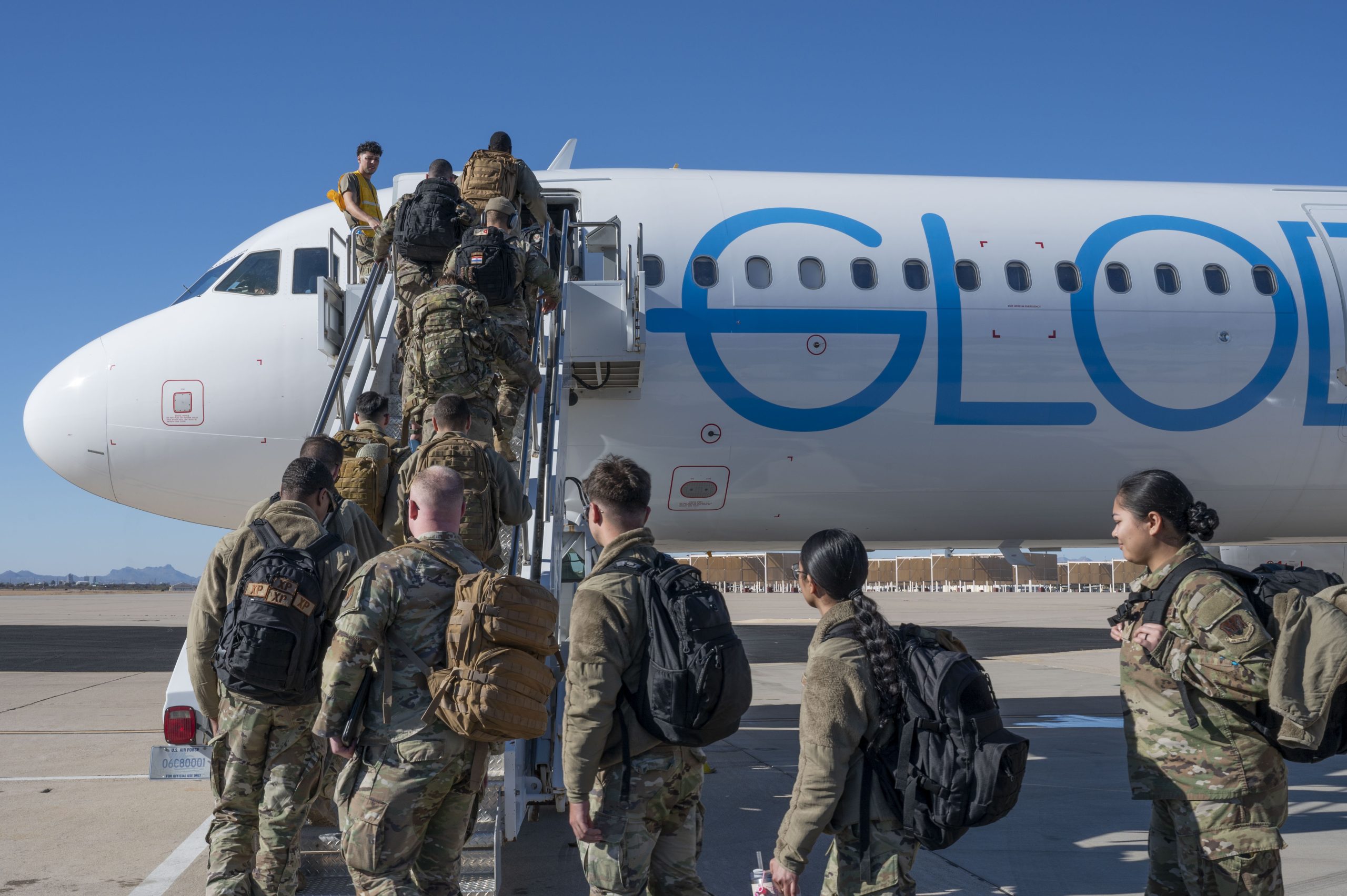The Air Force needs more fighters and bombers across the entire fleet, Air Force Secretary-nominee Troy Meink told lawmakers during his confirmation hearing March 27.
Advanced aircraft are needed to operate in the most contested airspace, he said, but existing F-15E Strike Eagle and other fourth-generation fighters still have value for operations in less-dense threat areas.
Asked by Sen. Eric Schmitt (R-Mo.) about the recent selection of Boeing to build the Next Generation Air Dominance fighter and the importance of air superiority in general, Meink was supportive of the new jet.
“I think it’s very, very important,” he said. “The sixth-generation capability that NGAD will bring—as well as the B-21 and other systems, the long-range munitions that that we’re developing—all those are going to be extremely important, and probably more so almost than probably since World War II.”
Schmitt’s state is home to Boeing’s military headquarters, where the F-47 will be built.
Meink, currently the principal deputy director of the National Reconnaissance Office, got into a detailed discussion on fighters with Sen. Ted Budd (R-N.C.), who represents Seymour Johnson Air Force Base, N.C., where F-15Es are stationed. He asked Meink if the F-15E will still have value in the years to come.
“Is it going to be able to operate in the highest environments? No. Does it have value? Yes,” Meink replied. “I think the question going forward will be, how long do we continue, and how do we best utilize the value from fourth-generation fighters?”
The F-15E “definitely has value today; not in all environments, but it definitely has value today,” Meink said. But Meink confessed to be “a little bit conflicted,” recalling that when he was an Air Force navigator on a KC-135 during the 1991 Gulf War, an F-15 “came to my rescue … and ran off a couple of Iraqi fighters.”
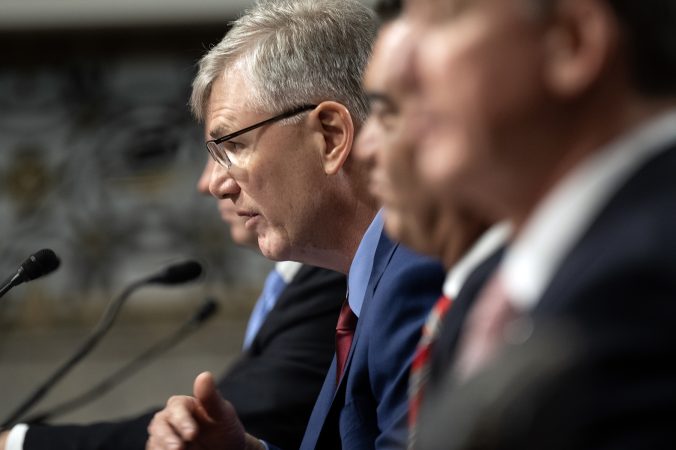
Asked by Budd if Meink thought the Air Force fleet is too small—a point Chief of Staff Gen. David W. Allvin has made in arguing for “more Air Force”—recently, Meink hedged.
First, the nominee focused on the age of the fleet, noting his own history with Eisenhower-era KC-135. These aircraft are “still very capable,” he said, though he conceded, “They are definitely getting old.”
Meink did not commit to fleet size or numbers, however. Instead, Meink said he needed to see “the detailed analysis that went into the projections on NGAD [the Next-Generation Air Dominance fighter] and the other systems.”
Eventually, however, he shared his “sense.”
“It’s probably too small, both on the fighter and the bomber side of the house,” Meink said.
Meink said his priorities will be to ensure the Air Force has the “lethality needed to deter all potential aggressors,” to “innovate faster” by increasing competition and accelerate the acquisition process to deliver new capabilities at lower cost “and deliver on the President’s goal of achieving peace through strength.”
Aircraft is only part of the equation in assuring readiness. Meinke promised Sen. Tom Cotton (R-Ark.) that he will look into Air Force pilot production and progress toward alleviating the service’s chronic pilot shortage.
It’s not just about what pilots are paid, Meink said. “It’s … quality of service, quality of life. Pay only goes so far. We need to make sure, not just with pilots, but across our highly skilled areas within our workforce, that they have the opportunity to do what they’ve been trained to do and what they love to do. I think that could be a bigger impact on maintaining some of these highly technical skill sets, like pilots and others.”
